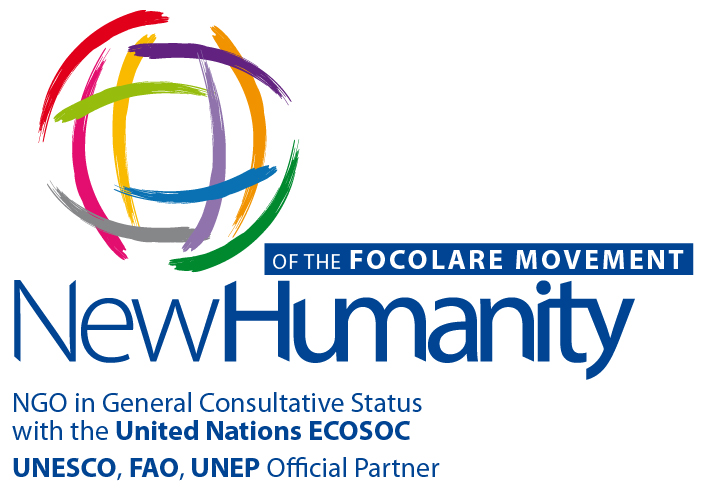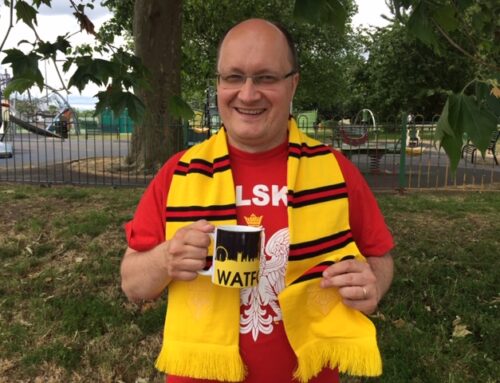After signing a peace deal with its largest rebel group, the FARC, the country saw its homicide rate fall to the lowest point in decades. Now killings are on the rise.

JAMUNDÍ, Colombia — First, he survived a machete attack. Months later, he begged a shadowy armed group to spare his life after hearing that his name appeared on its hit list.
Then, in late July, armed men followed Libardo Moreno, a 76-year-old farming activist, back to his ranch here in western Colombia. They came to the gate, asking for help with a flat tire. When Mr. Moreno brought over an air pump, they shot him in the neck and chest.
“He said, ‘They killed me, they killed me,’” recounted his wife, Margarita Fernández, who found him splayed on the concrete, blood pooling around him. “The motorcycles took off and they just left him there.”
Image: Familiares y amigos cargaban el ataúd de Holmes Niscué, un líder indígena asesinado el 19 de agosto, en las montañas cerca de Tumaco, Colombia. crédito Federico Rios Escobar para The New York Time
Colombia’s government officially declared an end to more than five decades of civil war in 2016, when it signed a peace deal with the country’s largest rebel group, the Revolutionary Armed Forces of Colombia, FARC. Within a year, the homicide rate fell to its lowest level since 1975, a remarkable turnaround for a country where a half-century of conflict had taken at least 200,000 lives.
But a chilling aspect of the bloodshed isn’t falling: Killings of the nation’s activists, including union organizers, local councilmen, indigenous leaders and environmentalists who are under vigorous attack across the country.
If anything, the killings appear to be on the rise in peacetime.
Mr. Moreno is one of at least 190 community leaders to be killed so far this year, which means the country will probably far exceed the number of activist murders recorded in all of 2017, according to Colombia’s Institute of Studies for Peace and Development, a research group.

Few of the cases have been solved by Colombia’s government, yet a pattern has emerged: Almost all of the murders have taken place in regions that FARC guerrillas abandoned last year when they demobilized as part of the peace deal.
The departure of the FARC was at first a boon for activists and community organizers — a chance to push for infrastructure projects needed for decades, like roads, aqueducts and services in the countryside.

Image: Kimberly Niscué, 14, wept next to the hearse carrying the coffin of her father Holmes Niscué, who was killed by unknown assailants last month. Credit Federico Rios Escobar for The New York Times
But the government has yet to take control of many of the areas the rebels left. In their place, a mix of drug traffickers, paramilitary groups and breakaway rebel factions that rejected the peace agreement have taken over.
These groups now see the activists’ development projects as a threat, bringing unwanted attention and potentially interfering with their illegal activities, residents say.
And that has put activists at the mercy of criminal groups.
“In these areas the FARC left, the state never arrived,” said Carlos Guevara, of the Somos Defensores, a research group that monitors attacks against activists.
In just one bloody two-day period this summer, 10 activists were killed in eight different provinces, including a left-wing political organizer, a village leader and two representatives of an indigenous group shot dead on a country road the night of July 6.
That same week, Martha Milena Becerra received a call that her mother, a community organizer outside of the western city of Quibdó, had also been shot dead, only moments after the two had talked by phone.
“She would say, ‘Why would anyone come after me if I haven’t hurt anyone?’” recalled Ms. Becerra, who soon packed her belongings and fled the city with her sister.
On Aug. 19, Marisel Tascus Pai was headed to a meeting with her husband, an indigenous leader named Holmes Niscué, when bullets rained down on him.
Mr. Niscué was shot nine times. He had been recently blamed by guerrilla groups for a government raid against suspected drug traffickers, which left seven people dead in July.
“We have no help, we are sleeping on the floor now,” said the widow, who has been in hiding since her husband’s funeral.
Adam Isacson, an analyst at the Washington Office on Latin America, a human rights group, said the killings of the social leaders could represent the beginning of a larger social breakdown in Colombia, despite the peace agreement with the FARC.
“There was a period of tranquillity where people were holding their breath as town councils and social leaders were practicing politics freely for the first time,” he said. “But that is over now. There was a window which opened up, and the state did not jump through — but other armed groups did.”
The killings present a daunting challenge for Colombia’s new president, Iván Duque, who took charge Aug. 7 and has pledged to make changes to the peace deal, which he calls flawed and in need of vast corrections.
In a response to written questions from The New York Times, the government called the killings “a grave phenomenon which deeply worries the president.” It blamed the deaths on Colombia’s past years of violence and said the government was trying to find new ways of protecting community organizers and activists.
“Colombia is a democratic country that offers guarantees to practice politics,” the government statement said.
Other parts of the government have a different view. In July, the country’s inspector general, an independent office that oversees public officials, said in some cases criminal groups had worked with the police and military to organize the killings.

Image: Gladys Mena is a social leader. Her close friend, community leader Santa Felicinda Santamaría, was killed by gunmen while she was eating lunch in Quibdó. Ms. Mena has also been threatened. Credit Federico Rios Escobar for The New York Times
The killings also have the attention of the United States, which provided the country with roughly $900 million in assistance between 2017 and 2018, split between anti-narcotics aid and measures for development and enacting the peace deal.
“It’s something we’ve talked to the Colombian government about quite a bit,” Nikki Haley, the American ambassador to the United Nations, told reporters in Bogotá. “To have lives threatened is unacceptable. And the United States always feels like we need to have our say to remind governments that we’re watching.”

Yet the killings continue, including at least another 13 in August. Here in Valle de Cauca, the province where Mr. Moreno was shot dead, members of his town council have considered a mass resignation to avoid being killed.
In Pindinché, a small mountain town in the province where an activist who pushed for water rights was shot dead in July, one of the man’s colleagues fretted over a new armed group that recently appeared nearby. The colleague now drives in a bulletproof car and carries a pistol.
Image: The western city of Quibdó, where Martha Milena Becerra was killed. Credit Federico Rios Escobar for The New York Times
“I am not a violent man,” said the colleague, who asked not to be named for fear of being killed too. “I’m here to help this community.”
Even in this province, where more than a dozen other social leaders had been killed this year, Mr. Moreno’s death came as a surprise. A former agricultural economist, he seemed to pose a threat to no one, especially given the projects he backed, like an aqueduct and a nursery school.
The area had once been ground zero in the conflict with rebels. In the 1990s, the FARC repeatedly robbed the only shopping mall in the area in deadly raids. But the war was winding down, and Mr. Moreno wanted to organize the area’s farmers.
“He immediately identified all the problems that had been years in the making,” recalled Andrés Moreno, his son.

Image: Holmes Niscué’s funeral. Credit Federico Rios Escobar for The New York Times
Mr. Moreno joined the village council and started a program for farmers to pool resources to grow and sell plantains. He pushed local officials to begin building an aqueduct to reach farmers in the countryside, something they had long said was impossible because of the rebels.
Then, last June, the rebels disarmed — a moment many residents had waited a lifetime to see. For a while, people in the village, Las Pilas, thought the conflict was over.
But the government sent no one to safeguard Mr. Moreno’s village: no police, no soldiers.

Image:Alberto Niscué, the father of Holmes Niscué. Alberto’s other son was killed 7 years ago in this house. Both murders remain unsolved. Credit Federico Rios Escobar for The New York Times
Drug traffickers had already taken notice of Las Pilas, villagers say. It sits at the foothills of steep mountains that cross to the country’s largest Pacific ports and have long hidden coca leaf farms and clandestine labs used to process cocaine. Mr. Moreno was concerned that his development proposals might be running afoul of the new drug traffickers entering the area, his family said.
“Paving a road or bringing an aqueduct is good,” said Alex Moreno, an in-law of Mr. Moreno. “But for a few, it is bad. It means there’s more access, more people — and more authorities can come.”
Peacetime had also brought an influx of farmers who had previously fled their fields during the fighting. Some indigenous groups had settled the empty farms, claiming the ancestral lands belonged to them.
Mr. Moreno increasingly found himself on the side of the displaced farmers in these disputes.
Last year, Mr. Moreno was walking with a farmer on his land when a group of indigenous men descended on them with machetes. Mr. Moreno was beaten and stabbed.
Andrés Moreno, Mr. Moreno’s son, became concerned that his father was stepping into too many new cross-fires. His vehicle was damaged twice by unknown assailants.

Image: Andrés Moreno, the son of Libardo Moreno, who was murdered in July. Credit Federico Rios Escobar for The New York Times
“We said, ‘Dad, calm down,’” recalled the son. “He would go into these meetings and speak up, but everyone else would be quiet. They were getting scared.”
Then in late June, two weeks before he was killed, word began to spread that he was on a hit list of a guerrilla group still in the mountains.
The FARC had demobilized, but this band appeared to be a smaller rebel group that kept fighting, or a breakaway faction that never signed the peace deal.
Mr. Moreno decided to meet them face to face.
“He wasn’t scared,” recalled his son. “He said, ‘I’m here to help the community.’”
The meeting took place in the mountains. A commander showed Mr. Moreno the hit list and said his name wasn’t on it. Still, the meeting made Mr. Moreno uneasy. He had never seen the commander before, and the group wore no badges with insignia showing who they were, Mr. Moreno’s son said.
In the days before his death, three explosions hit the aqueduct Mr. Moreno had been championing.
Some in Las Pilas suspected the drug trafficking groups; others assumed sabotage by the guerrillas. A few cast suspicion on the indigenous community arguing over access to water.
On July 23, Mr. Moreno returned to his ranch after meeting politicians to discuss the attack. According to his wife, two motorcycles waited alongside the road, letting Mr. Moreno pass.
A knock came at the gate of their farm. A man asked for a pump, claiming his tire had run out of air.
“Boom, boom,” recalled Ms. Fernandez, Mr. Moreno’s wife, pointing to her neck to describe how her husband was killed.
Alex Moreno, one of his in-laws, said the authorities failed Mr. Moreno in life by abandoning his village. But they also failed him in death: The police, he says, refused to come up to Las Pilas to collect the body, fearing the violence there.
Mr. Moreno collected the bullet casings himself with gloves borrowed from a funeral home.
“It’s impossible to ever find out who did this if the authorities wouldn’t even come to the crime scene,” he said.
Susan Abad contributed reporting from Bogotá




